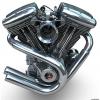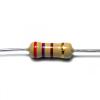Hi Tom,
Yes there has been some conversation along these lines, but not a lot. I haven't stopped researching this question. You won't find an expert among us, at least one who will chime in on the subject yet. Truth is there isn't a lot of research in this area. However. it appears NAD+ boosting "should" help cells remain viable longer by reenforcing cellular maintenance. There is still the inevitable Hayflick limit where cells will eventually enter into senescence, once reached I don't think anything we can do can change that or would we want to.
"Leonard Hayflick discovered that non-stem (i.e. non-telomerase active) cells in a dish can only divide around 60 times before the telomeres become too short to survive. The limit on a cell’s maximum lifespan with respect to its descendants is known as its “Hayflick Limit."
In a test tube cell division cuts off at around 60 replications. To date I haven't read any studies to investigate whether NAD+ boosting would increase the replicative life span. I take that back Brenner and yeast. So many factors contribute to healthy cell division but it stands to reason the heather the cell state is at the time of division the longer that subsequent cell line will remain viable and able to contribute.
I've been reading on DNA repair mechanisms and Germ cells in particular and have found some interesting theories on the energy budget required. "Two proponents for this view, Breivik and Gaudernack, have suggested that in certain situations the cost of DNA repair might exceed the cost of errors. This model predicts that genetic stability is configured for an optimal cost-benefit relationship. Natural selection is not expected to have produced the best genetic stability available in the human body, merely the best compromise of DNA repair and costs. Repair and maintenance of the vast human genome is thermodynamically expensive, and an optimal balance between DNA repair and dietary needs is likely to have originated." It appears at a very fundamental level our germ cells get the best DNA protection and our bodily tissues receive just enough repair attention to get us though the process of reproduction and raising offspring. This all ties into senescence and how long our bodily cell communities are expected to live to carry our germ cell to reproduction. It kind of makes you feel like we are just the vehicle to carry these germ cells around just to feed and protect them. All the while they get the best treatment and maintenance to preserve the integrity of the genome.
Some of us currently feel if a senescence cell isn't contributing to our good health its dead weight and we need to find a way to shed those zombie cells. Check out the tread on senolytics. For me right now it a little early to totally jump on this band wagon. Better more selective drugs need to be developed.
Last May Jun-Ichi Hayashi at the University of Tsukuba discovered the mutations we've come to believe accumulates with age is largely false. He suggests; "epigenetic regulation, may be responsible for the age-associated effects seen in the mitochondria" Remember all the talk about glycine, it appears the functionality of Mitochondria can be reinvigorated. As to damaged organelles Autophagy of our mitochondria is a safegaurd against Mitochondria that are damaged and not working. We know of disease states where this fails but there is a normal barrier in place to eliminate those nonfunctional or damaged Mitochondria. But back to the root of your question, Professor Hayashi turned the whole theory of aging on its head:
"This theory, the mitochondrial theory of aging, proposes that age-associated mitochondrial defects are controlled by the accumulation of mutations in the mitochondrial DNA. Abnormal mitochondrial function is one of the hallmarks of aging in many species, including humans. This is mostly due to the fact that the mitochondrion is the so-called powerhouse of the cell as it produces energy in a process called cellular respiration. Damage to the mitochondrial DNA results in changes or mutations in the DNA sequence. Accumulation of these changes is associated with a reduced lifespan and early onset of aging-related characteristics such as weight and hair loss, curvature of the spine and osteoporosis.
There is, however, a growing body of conflicting evidence that has raised doubts about the validity of this theory." read his labs findings. If an epigenitic reason is behind our declining Mitochondria I want to see more research to tease out a treatment.
This is why I added glycine to my regiment.
Edited by Bryan_S, 25 March 2016 - 07:56 AM.
































 This topic is locked
This topic is locked


















